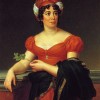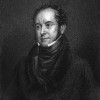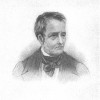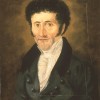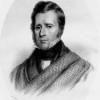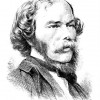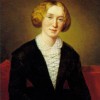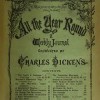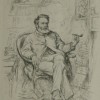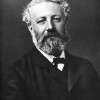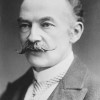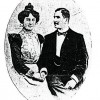Genre
Timeline
Table of Events
| Date | Event | Created by |
|---|---|---|
| 1 Apr 1807 | Corinne, Or Italy
Corinne, a famous and influential French novel by Germaine de Staël, influenced women poets throughout the nineteenth century with its depiction of an Anglo-Italian poet-heroine, who is emblematic of Italy’s struggle for independence. The novel immediately commanded a wide audience in its original French and, through two near-immediate translations, in English. Corinne's attractions doubtless lay partly in its plot: Oswald, Lord Nelvil, a melancholy British peer, travels to Italy, falls in love with the omni-talented artist and performer Corinne, and commences a relationship that reveals both characters' secret histories and their connections to the grand events of recent European politics and history. ArticlesErik Simpson, "On Corinne, Or Italy" Related Articles |
David Rettenmaier |
| Dec 1815 | Emma
ArticlesAnne Wallace, “On the Deceased Wife’s Sister Controversy, 1835-1907″ |
David Rettenmaier |
| Feb 1824 | Sayings and Doings
Related ArticlesAngela Esterhammer, “1824: Improvisation, Speculation, and Identity-Construction” |
David Rettenmaier |
| 6 Apr 1824 | Walladmor
Related ArticlesAngela Esterhammer, “1824: Improvisation, Speculation, and Identity-Construction” |
David Rettenmaier |
| Jun 1824 | Devil’s Elixir
Related ArticlesAngela Esterhammer, “1824: Improvisation, Speculation, and Identity-Construction” |
David Rettenmaier |
| Jun 1824 | The Private Memoirs and Confessions of a Justified Sinner
Related ArticlesAngela Esterhammer, “1824: Improvisation, Speculation, and Identity-Construction” |
David Rettenmaier |
| 21 Nov 1846 to 28 Mar 1847 | The String of Pearls: A RomanceFrom 21 November 1846 to 28 March 1847, serial publication of The String of Pearls: A Romance (the anonymously written novel that originated the Sweeney Todd story) in 18 numbers in The People’s Periodical and Family Library, edited by Edward Lloyd. ArticlesSharon Aronofsky Weltman, “1847: Sweeney Todd and Abolition” |
David Rettenmaier |
| 15 Nov 1856 | Aurora Leigh
ArticlesMarjorie Stone, “The ‘Advent’ of Aurora Leigh: Critical Myths and Periodical Debates” |
David Rettenmaier |
| 1 Oct 1858 | "Realism in Art"
Articles |
David Rettenmaier |
| 1 Feb 1859 | Adam Bede
Related Articles |
David Rettenmaier |
| 30 Apr 1859 | All the Year Round founded
All the Year Round was the first magazine with Dickens as proprietor-editor, and home to first important sensation novel, Woman in White. Articles |
David Rettenmaier |
| 1 Jun 1859 | British Novelists and their Styles
Articles |
David Rettenmaier |
| 1 Nov 1859 | Macmillan's Magazine foundedFounding of Macmillan’s Magazine in November 1859. Macmillan’s was the first of new generation of shilling magazines emphasizing opinion and signature as well as literature. ArticlesLinda K. Hughes, "On New Monthly Magazines, 1859-60" Related Articles |
David Rettenmaier |
| 6 Nov 1872 to 22 Dec 1872 | Around the World in Eighty Days Related Articles |
David Rettenmaier |
| Jan 1882 to Dec 1882 | All Sorts and Conditions of MenFrom January to December 1882, Walter Besant published his novel of the East End, All Sorts and Conditions of Men imagining a People's Palace in the East End of London. A three-volume book edition appeared in October 1882. Related ArticlesHeidi Kaufman, “1800-1900: Inside and Outside the Nineteenth-Century East End” |
David Rettenmaier |
| Jan 1887 to Jun 1887 | Amour Dure published in Murray's MagazinePublication of the novella Amour Dure by Vernon Lee (pseudonym of Violet Paget). Articles |
David Rettenmaier |
| May 1887 | People's Palace openingIn May 1887, A People's Palace opened in London, prompted in part by Walter Besant's novel, All Sorts and Conditions of Men (1882). Related ArticlesHeidi Kaufman, “1800-1900: Inside and Outside the Nineteenth-Century East End” |
David Rettenmaier |
| May 1894 | Story of a Modern WomanIn May 1894, Ella Hepworth Dixon's The Story of a Modern Woman was published. It is the best-known New Woman novel and draws on Dixon's own experiences supporting herself as a journalist.
ArticlesMeaghan Clarke, “1894: The Year of the New Woman Art Critic” |
David Rettenmaier |
| 27 Jun 1894 | End of the 3-Volume Novel
ArticlesRichard Menke, “The End of the Three-Volume Novel System, 27 June 1894″ |
David Rettenmaier |
| 1896 | Thomas Hardy’s “End of Prose”
Articles |
David Rettenmaier |
| 1 Sep 1901 | The Purple Cloud
ArticlesMonique R. Morgan, “The Eruption of Krakatoa (also known as Krakatau) in 1883″ Related Articles |
David Rettenmaier |
| Jan 1905 | A Dark Lantern
Articles |
David Rettenmaier |

